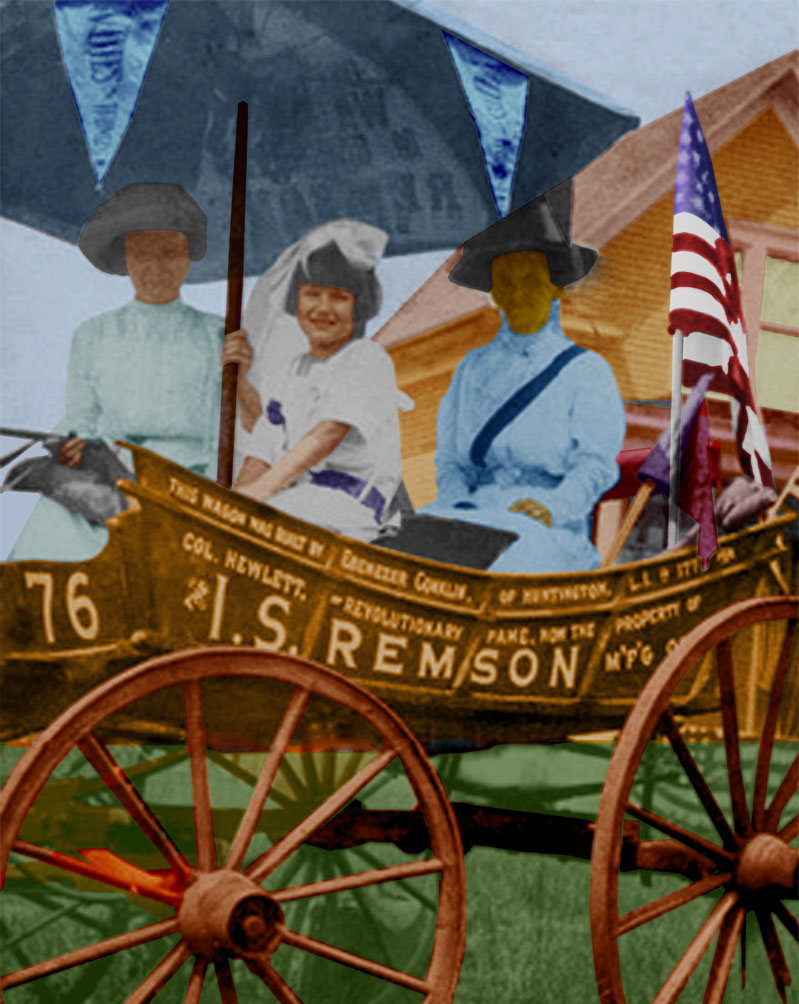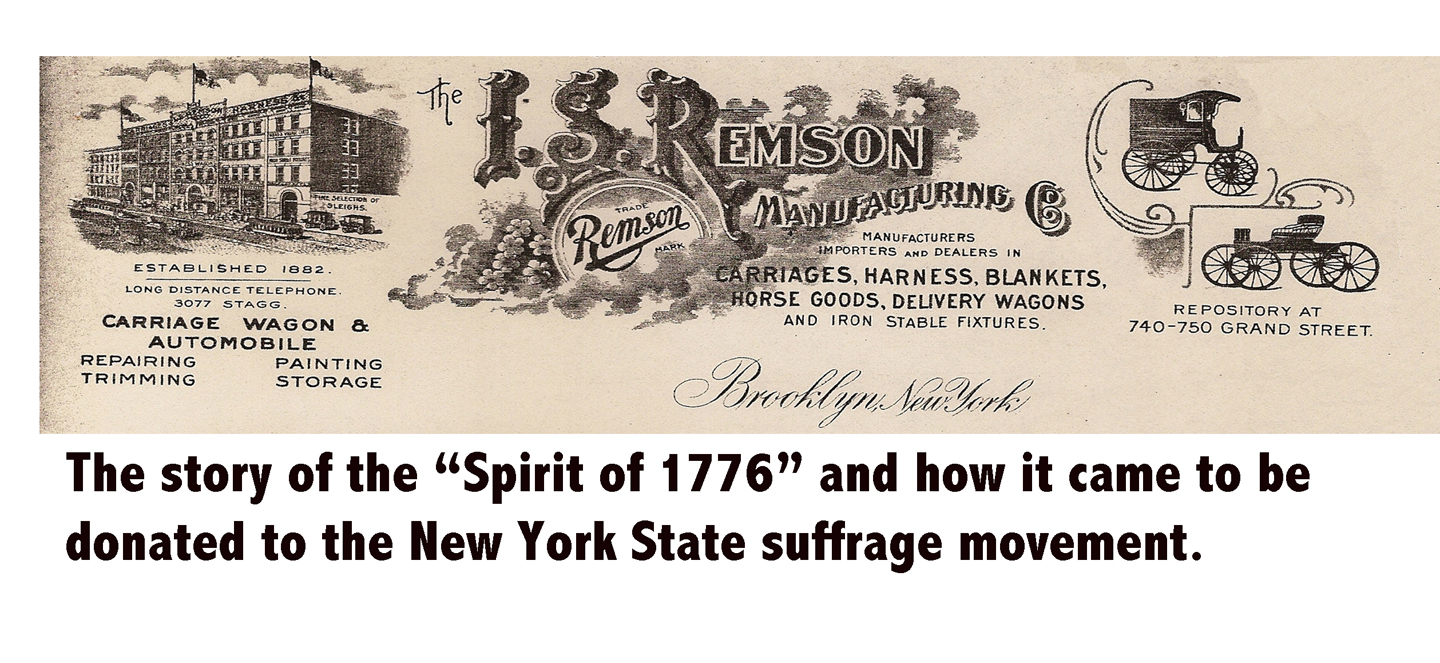by Marguerite Kearns
 The employees at the I.S. Remson Company in Brooklyn, New York were publicity hounds, and for good reason. The display and classified ads in New York City’s metropolitan newspapers promoting I.S Remson’s wagon and carriage business after 1910 weren’t enough to compete in the loud roar of a marketplace promoting gasoline-fired automobiles.
The employees at the I.S. Remson Company in Brooklyn, New York were publicity hounds, and for good reason. The display and classified ads in New York City’s metropolitan newspapers promoting I.S Remson’s wagon and carriage business after 1910 weren’t enough to compete in the loud roar of a marketplace promoting gasoline-fired automobiles.
The wagon and carriage business had been gradually undermined by the sale of automobiles, and I.S. Remson company staff members were determined to do something about it. Their jobs and the company’s economic future were at stake.
I.S. Remson called itself the largest wagon business in New York State, but even this claim wasn’t enough to turn around the firm’s financial losses. The company’s founder, Mr. I.S. Remson, died in 1910. He hadn’t lived long enough to witness the worst of the economic decline and the chronic teeth grinding in the firm’s accounting office. Mr. Remson certainly would have approved, however, that one of his favorite wagons in the company warehouse, the “Spirit of 1776,” would be involved in a promotion designed to impact Remson’s future favorably.
THE SUFFRAGE MOVEMENT NEEDED WHEELS AND REMSON COMPANY NEEDED EXPOSURE
Company officials needed a way to get their message out to the public, which is when Mr. Andrew F. Wilson, the Remson president, in 1913 came up with a scheme. He’d donate the 1776 horse-drawn wagon to the state suffrage movement. The addition of painted slogans about the American Revolution on the wagon’s exterior would support the women, as well as Remson. The public would hopefully link the company name to Votes for Women, at least in the New York City metropolitan area.
This hadn’t been Mr. Wilson’s idea exclusively. It bubbled up during meetings where he’d spoken to suffrage activists he knew socially, such as Irene Davison and Edna Buckman Kearns. The idea gathered steam after Remson employees rolled the “Spirit of 1776” out of the Brooklyn warehouse in the summer of 1913 to inspect the wagon and make repairs for a projected Long Island organizing campaign.
Company founder Mr. Remson loved this old wagon, the “Spirit of 1776.” The firm’s advertising campaign by 1913 hadn’t gone beyond Amos Veritzan who dressed up as Uncle Sam and drove the old horse-drawn wagon through Brooklyn streets on the Fourth of July. The wagon had crowd appeal, and the prospect of donating the wagon to the state suffrage movement seemed like a novel idea with great potential.
Most of the I.S. Remson staff agreed, despite what some individuals might have thought privately about the prospect of women invading the polling places. Mr. Wilson was optimistic about the publicity plan. So the Remson company president spent a significant number of hours during the summer of 1913 on the phone and in written correspondence with Edna Kearns and Irene Davison to work out the transfer details.
They discussed how they could work together on the publicity, as well as the nuts and bolts of arranging for wagon storage and repair. The NYS Woman Suffrage Association president, Harriet May Mills, assigned Mrs. Wilmer R. Kearns, or Edna Buckman Kearns, to take the lead relative to putting the wagon on the road for Long Island suffrage organizing during the summer of 1913.
NEW YORK CITY’S NEWSPAPERS CONSIDERED THE WAGON CEREMONY NEWSWORTHY
Once a New York Times reporter agreed to write about the wagon’s presentation to the state suffrage association at its office at 108 Madison Avenue, that’s when Andrew F. Wilson felt confident that other city papers would fall into line. The Tribune, the Brooklyn Daily Eagle, The Sun, and other city and metropolitan papers covered the presentation ceremony.
The state suffrage organization hosted the presentation ceremony at its Manhattan offices at 108 Madison Avenue on July 1, 1913. Then the wagon and suffrage activists began their exhausting journey around Long Island. The wagon was also used later in New York City parades and other special programs.
During Mr. Remson’s watch, the old wagon already carried the name of the “Spirit of 1776,” which fit perfectly with the suffrage movement’s national theme which was to complete the unfinished American Revolution. The wagon and its name became a visible symbol of the movement’s grassroots organizing, as well as an inspiring slogan. The suffrage campaign wagon attracted crowds and generated considerable publicity in 1913. This remains true today.

